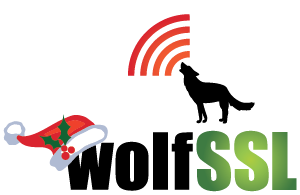The wolfSSL team has released version 2.6.0 of wolfBoot, the lightweight and portable secure bootloader for embedded systems. This update expands platform coverage, improves support for external memory layouts, and adds key performance optimizations for a range of architectures. It also includes critical fixes and brings updated module integration across the wolfSSL ecosystem. New Platform […]
Read MoreMore TagCategory: Uncategorized
Live Webinar: Everything You Need to Know About Medical Device Cybersecurity
Elevate your cybersecurity strategy with proven solutions built for connected care. Join us on August 20th at 9 AM PT for a live webinar led by wolfSSL Senior Software Engineer Eric Blankenhorn. We’ll cover how to strengthen cybersecurity across the entire medical device ecosystem from implantables and patient monitors to bedside devices and cloud platforms. […]
Read MoreMore TagProfessor Bill Buchanan, OBE, FRSE
Today, we would like to shout out to wolfSSL’s newest friend, Professor Bill Buchanan, OBE, FRSE. Professor Bill Buchanan stands as one of Scotland’s most distinguished cybersecurity educators, holding the prestigious title of Officer of the Order of the British Empire (OBE) for his services to cybersecurity. As a Professor in the School of Computing […]
Read MoreMore TagBroken SSL/TLS Versions: Attacks, Weaknesses, and Mitigations
At wolfSSL, we prioritize strong, modern cryptographic practices—especially for embedded systems where performance, code size, and reliability are critical. While TLS continues to be the standard for securing communications, many early protocol versions have been broken or deprecated due to serious security flaws. Understanding the history of these attacks and their mitigations helps clarify why […]
Read MoreMore TagwolfSSL Advances FIPS Leadership with New Certificate #5041 and Evergreen FIPS 140 Strategy
EDMONDS, Wash., Aug. 4, 2025 /PRNewswire-PRWeb/ — wolfSSL Inc., a globally renowned leader in cryptography and network security solutions, announces the latest milestone in its FIPS strategy with the issuance of FIPS 140-3 Validated Certificate #5041 for the wolfCrypt cryptographic module. This marks yet another step forward in wolfSSL’s long-term strategy to deliver agile, secure, […]
Read MoreMore TagLMS Versus XMSS Versus SLH-DSA
Here at wolfSSL, we don’t just love coding! We love telling the world about what we code. To that end, we want you to understand the differences between LMS, XMSS, and SLH-DSA. Here are their official standard specifications: LMS (Leighton-Micali Hash-Based Signatures) XMSS (eXtended Merkle Signature Scheme) SLH-DSA (Stateless Hash-Based Digital Signature Standard) The most […]
Read MoreMore TagEmpowering Space Missions with NASA-STD-1006A Compliance
Space missions require strong security to guard against cyber threats. The wolfCrypt cryptography library meets all encryption requirements in NASA’s Space System Protection Standard (NASA-STD-1006A), providing lightweight cryptography suited for resource-constrained secure command communications. Understanding NASA-STD-1006A NASA-STD-1006A, titled “Space System Protection Requirements,” establishes agency-level guidelines to make NASA missions resilient against cyber threats. Approved in […]
Read MoreMore TagLive Webinar: Post-Quantum TLS 1.3 Over UART
Learn how to build an app for the STM32-U5 using TLS 1.3 over UART with a hybrid key exchange combining ECC and post-quantum ML-KEM! The STM32U5 series features advanced power-saving, high-performance microcontrollers based on the Arm® Cortex®-M33, designed for demanding applications that require both performance and low power consumption. It provides greater integration and memory […]
Read MoreMore TagUpdated Post-Quantum Benchmarks for ML-KEM and ML-DSA on STM32
A long, long time ago, we took some benchmarks for Kyber on STM32 NUCLEO-F446ZE. Back then, it was the NIST Submission of Kyber, and we were using the implementation from PQM4 as integration in wolfCrypt. Now, Kyber has evolved into ML-KEM, and we have our implementation! We decided to take some benchmarks on a newer […]
Read MoreMore TagOptimizing Post-Quantum Algorithm Memory Usage on Embedded Systems
Here at wolfSSL, we are intimately aware of the needs of our embedded customers. It is always about the tradeoffs and optimizations that fit their unique use cases and needs. The tradeoffs are typically between speed, footprint size, and memory usage. In many of our blog posts, we like to focus on our speed performance, […]
Read MoreMore Tag
